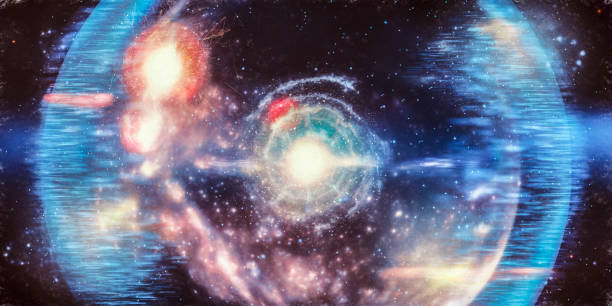Unveiling the Origins of the Universe: From the Big Bang Theory to Cosmic Microwave Background Radiation
The origins of the universe have captivated human curiosity for centuries, leading to the development of various cosmological models. Among these, the Big Bang Theory stands as the most widely accepted explanation for the universe's inception and evolution. A pivotal piece of evidence supporting this theory is the Cosmic Microwave Background (CMB) radiation, the faint afterglow of the Big Bang. This comprehensive exploration delves into the Big Bang Theory, the discovery and significance of the CMB, and the insights gained from recent observations.

The Big Bang Theory: Genesis of the Universe
The Big Bang Theory posits that the universe originated approximately 13.8 billion years ago from an extremely hot and dense singularity. This event marked the beginning of space and time, initiating a rapid expansion that has continued to this day. In the immediate aftermath, the universe was an intense, opaque plasma of photons, electrons, and baryons.
As the universe expanded, it cooled, allowing for the formation of subatomic particles and simple elements. Around 380,000 years after the Big Bang, the temperature dropped sufficiently for electrons to combine with protons, forming neutral hydrogen atoms in a process known as recombination. This transition rendered the universe transparent, permitting photons to travel freely and giving rise to the CMB radiation we detect today.
Discovery of the Cosmic Microwave Background Radiation
The existence of the CMB was first predicted in 1948 by physicists Ralph Alpher and Robert Herman, who estimated that a residual glow from the Big Bang should permeate the universe. However, it wasn't until 1965 that this radiation was serendipitously discovered by Arno Penzias and Robert Wilson at Bell Telephone Laboratories. While calibrating a sensitive horn antenna, they encountered a persistent, isotropic noise that they couldn't attribute to any known source. This mysterious signal was soon identified as the CMB, providing compelling evidence for the Big Bang Theory.
Characteristics and Significance of the CMB
The CMB is a nearly uniform radiation field that fills the universe, exhibiting a black-body spectrum at a temperature of approximately 2.726 K. This uniformity offers a snapshot of the early universe, reflecting conditions at the time of recombination. However, slight anisotropies—tiny fluctuations in temperature—are present within the CMB. These variations correspond to regions of differing densities in the early universe, serving as the seeds for the large-scale structure observed today, such as galaxies and clusters.
Recent Observations and Insights
Advancements in observational cosmology have allowed for increasingly detailed measurements of the CMB. Notably, the Atacama Cosmology Telescope (ACT) in Chile has captured high-resolution images of the universe at just 380,000 years old. These observations reveal the formation and movements of primordial hydrogen and helium gas clouds, offering insights into the processes that led to the formation of stars and galaxies. Analysis of these images suggests that the observable universe spans nearly 50 billion light-years and contains a mass equivalent to about 1,900 zetta-suns, with dark matter and dark energy being predominant components. These findings align with the Lambda Cold Dark Matter (ΛCDM) model, reinforcing its status as the standard cosmological model.
Conclusion
The Big Bang Theory, supported by the discovery and analysis of the Cosmic Microwave Background radiation, provides a robust framework for understanding the universe's origins and evolution. Ongoing observations and research continue to refine this model, offering deeper insights into the fundamental processes that have shaped the cosmos. As technology advances, future studies promise to unveil even more details about the universe's infancy, further illuminating the journey from the Big Bang to the complex structure we observe today.
0 Comment to "Unveiling the Origins of the Universe: From the Big Bang Theory to Cosmic Microwave Background Radiation"
Post a Comment